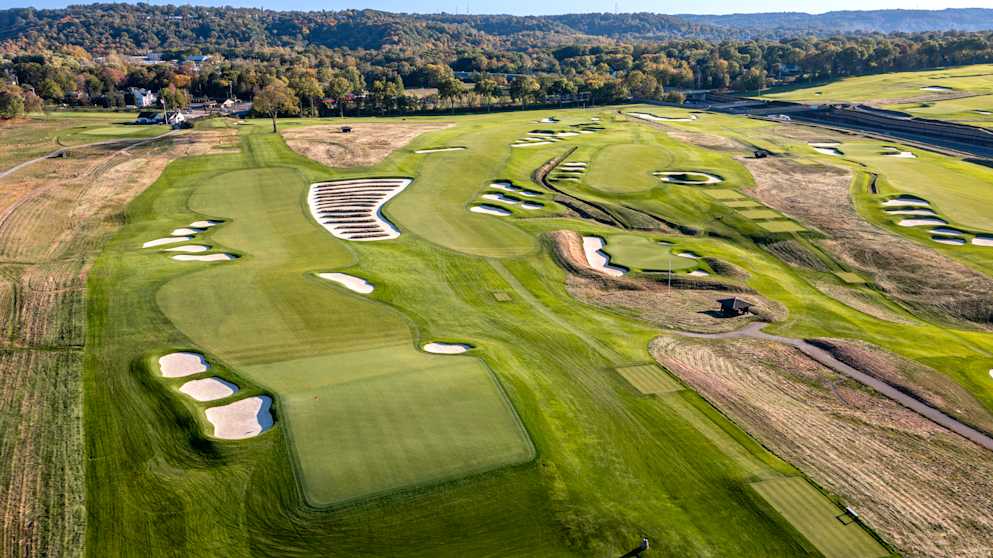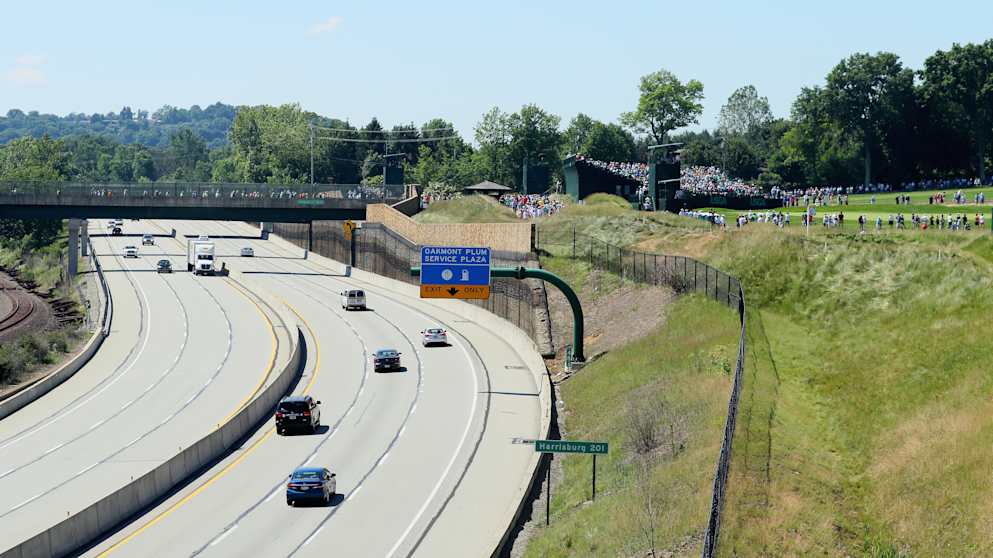The U.S. Open returns to Oakmont Country Club this week for a record tenth occasion. Here are seven things to know about the venue.
Henry C. Fownes - The Oakmont Architect
Established in 1903, Oakmont Country Club was largely the vision of one man – Henry Clay Fownes. Born in Pittsburgh in 1856, he made his fortune in iron manufacturing. With his brother, William C. Fownes, Henry formed the Carrie Furnace Company, which was bought out by the Carnegie Steel Corporation in 1896. Fownes’ goal after his company was sold was to build a golf course and he spent a year building the course on former farmland adjacent to the Allegheny River Valley. The Pennsylvania Turnpike, which was constructed in the late 1940s, passes through part of the course. Fownes' son William was instrumental in the evolution of the course, consistently making adjustments to the site, especially after the death of his father in 1935. Oakmont became the first golf course in the United States to be recognised as a National Historic Landmark in 1987.

A Gil Hanse facelift for 2025
Since the U.S. Open was last at Oakmont in 2016, the course has undergone modifications carried out by Gil Hanse and design partner Jim Wagner. Around 150 yards have been added with new tees on holes such as the third and 11th that lengthen the championship length to 7,372 yards, 153 yards longer than the par 70 7,219-yard examination nine years ago. Another move since Hanse was called upon in 2022 has seen the greens expanded, restoring more than 24,000 square feet in surface area. This has created at least one new hole location on each green. What it lacks in trees, dog-legs, and water, it makes up for elsewhere. Every hazard has also been rebuilt, with the 175 bunkers revamped amid improvements to the drainage system. The Church Pews bunker - created in the 1930s - is one of the most famous bunkers in golf and sits to the left of the third and fourth fairways. A very large bunker, it is broken up by a series of ridges - rows of grassy berms running straight across. The rough has also been topped off at five inches, with a wet spring making it particularly thick. There will also not be graduated rough - a first cut closer to the fairway that is shorter and less penalising.

Oakmont's history of staging the U.S. Open
No venue has hosted the U.S. Open more often than Oakmont. This year marks a record tenth visit to the course, three times more than Baltusrol Golf Club in New Jersey. Since Scottish-born golfer Tommy Armour won the first edition to be held at Oakmont in 1927, six Americans have since won their national championship, including Ben Hogan and Jack Nicklaus in 1953 and 1962 respectively. In 1994, South Africa's Ernie Els halted a run of US dominance as he won his first Major at the venue in a play-off, before Argentina's Angel Cabrera won in 2007. Dustin Johnson was the most recent winner of the U.S. Open in 2016. It was announced in August 2021 that Oakmont would be a U.S. Open anchor site, and also host the championship in 2034, 2042 and 2049.

The longest par three in U.S. Open history
While for many of us a 289-yard hole should present a genuine birdie opportunity, for those teeing it up this week a par is more than likely to be good enough. Oakmont’s eighth has always been one of the longer par threes in golf, but for the U.S. Open it could play as far as 300 yards. In advance of the tournament, Viktor Hovland has called it "silly", while Nicklaus - who won the first of his record 18 Majors in his career at Oakmont - labelled it "crazy" last month. In the final round of the 1973 U.S. Open, this was the only hole Johnny Miller bogeyed en route to his course record 63 as he made a three-putt.
Hey @USGA, someone put a 3 instead of a 4. Driver Pin High 😂 #USOPEN2025 pic.twitter.com/meBoHVcnYL
— Min Woo Lee (@Minwoo27Lee) June 9, 2025
The Pennsylvania Turnpike
Oakmont boasts many distinctive features, but arguably the most striking is how a four-lane highway cuts through the heart of the course. The Pennsylvania Turnpike runs right through the property, seperating holes 2-8 from the rest of the course and the club house. Two considerable pedestrian bridges carry golfers and spectators from one section to the other. While not visible for the most part, the traffic travelling across the highway is audible from the eighth green.

Oakmont originally played to a par of 80
When Oakmont Country Club opened for play, it measured 6,406 yards and played to a par of 80. It featured eight par fives and a par six. Now playing to a par of 70 for this championship, there were 60 scores of 80 or higher when the U.S. Open was hosted here in 2007 when the winning score was four over. While the winning score was nine shots better in 2016, 14 of the 18 holes still played over par across the week.
History of the Stimpmeter starts at Oakmont
Having watched Gene Sarazen putt off the green in the 1935 U.S. Open at Oakmont as a fan, Edward Stimpson decided to work on a device to measure green speeds. Stimpson was captain of the Harvard golf team in his younger years and used his golfing knowledge to create an angled track that could be used on a flat putting surface to determine the relative speed of the greens. The Stimpmeter has been widely used in golf ever since and is still the trusted measure. As for this week, greens are expected to run at 15 on the Stimpmeter, among the fastest players will face all year. By comparison, the greens ran around 11 at last week's KLM Open on the DP World Tour.

The ninth green is also the practice green
Yes, you read that right. Framed by the clubhouse, the ninth features one of the most iconic green complexes in golf. Approach shots are played to a massive, multi-tiered putting surface, the back area of which serves as a practice green.
The unique 9th green at Oakmont where half of it is used as a practice putting green 🧐#USOpen pic.twitter.com/PnbA9HgzLJ
— DP World Tour (@DPWorldTour) June 9, 2025










